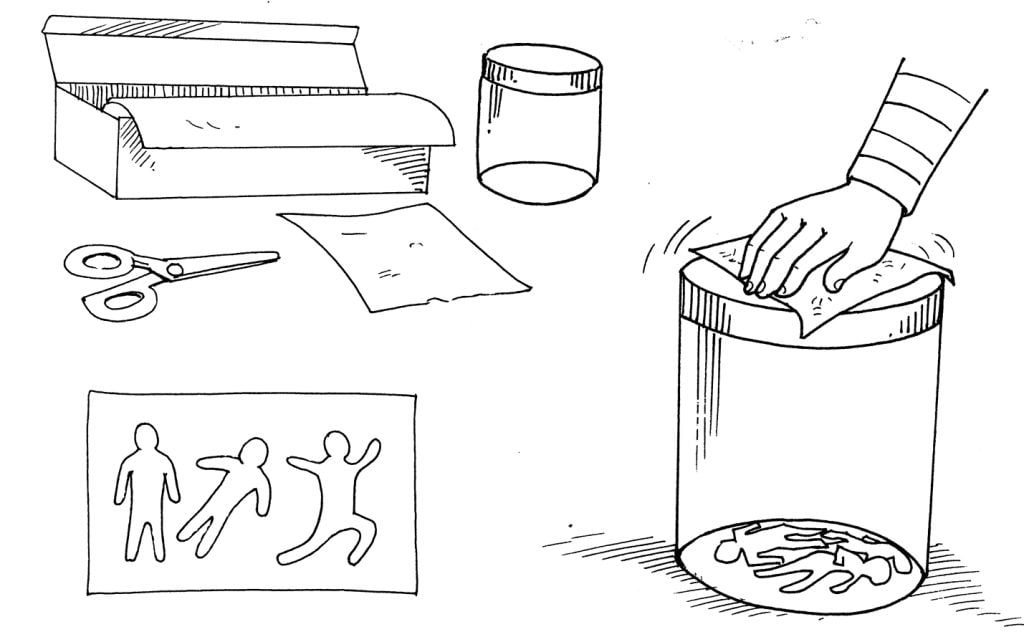
Electrical charges flow easily through metal. Yet, we haven’t used metal in any of the experiments. Why? Because there is a problem while using metal. Unlike materials such as plastic, paper, and nylon-metal is not lightweight. It’s heavy. The mass of metal can easily “mask” the attraction of electrostatic forces. But for those of you who still want a metal experiment, here’s this stand-up activity.
Things Required:
A sheet of light-gauge aluminium foil
Pair of scissors
Clear plastic food bowl with cover
Wool
Directions:
Use your scissors to cut out several human-like figures from a sheet of light-gauge aluminium foil. The figures from head to toe should be slightly shorter than the depth of the plastic food bowl (from bottom to cover).
Place the figures in the bowl. Cover the bowl. Use the wool to stroke the cover of the bowl vigorously. What happens?
This Is What Happens:
As the plastic cover was stroked, it acquired a negative charge. This charge induced a positive charge in the near ends of the aluminium figures.
Since the heads were the lighter end of the cutouts, they probably were the first part that moved upwards. Since the charge wasn’t great enough to overcome all of the weight of the figures, they did not fly up and cling to the cover. Instead, the aluminium cutouts remained suspended in air midway between the top and bottom of the bowl.
